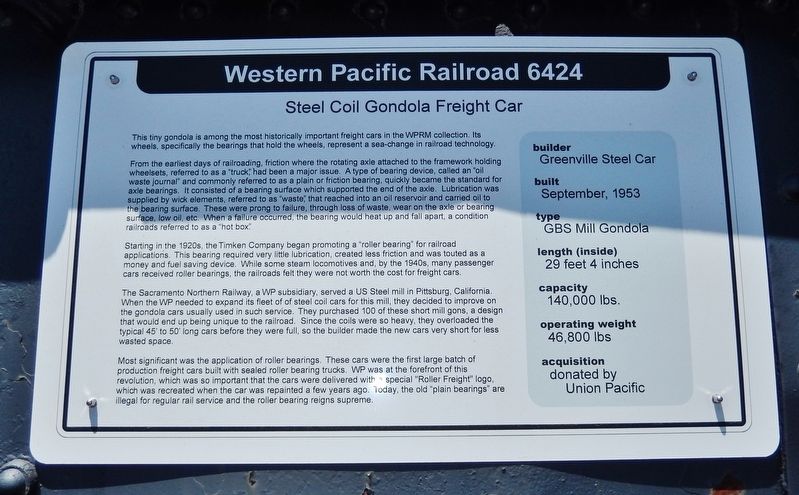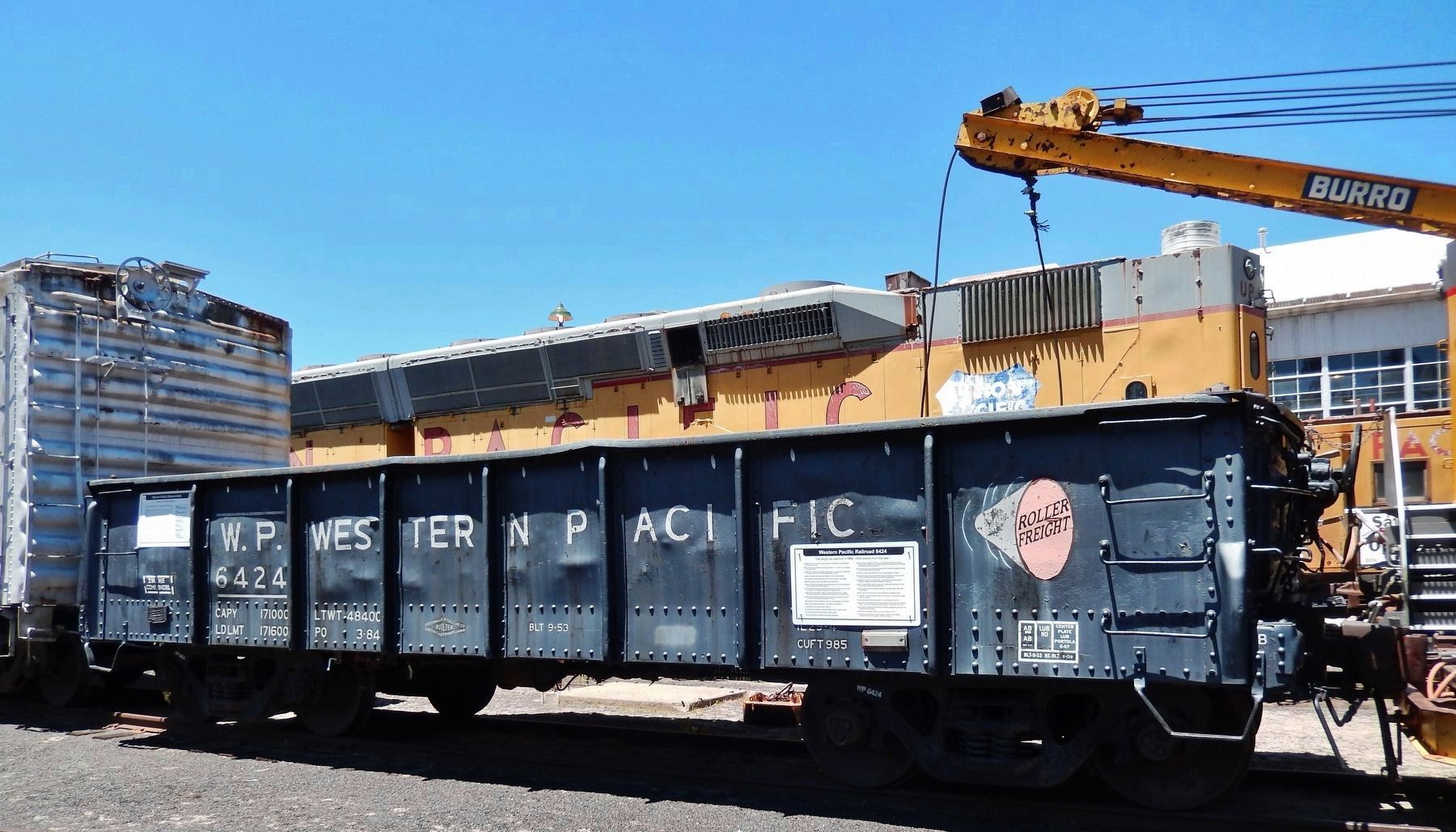Portola in Plumas County, California — The American West (Pacific Coastal)
Western Pacific Railroad 6424
Steel Coil Gondola Freight Car
From the earliest days of railroading, friction where the rotating axle attached to the framework holding wheelsets, referred to as a "truck, " had been a major issue. A type of bearing device, called an "oil waste journal" and commonly referred to as a plain or friction bearing, quickly became the standard for axle bearings. It consisted of a bearing surface which supported the end of the axle. Lubrication was supplied by wick elements, referred to as "waste," that reached into an oil reservoir and carried oil to the bearing surface. These were prone to failure, through loss of waste, wear on the axle or bearing surface, low oil, etc. When a failure occurred, the bearing would heat up and fall apart, a condition railroads referred to as a "hot box.”
Starting in the 1920s, the Timken Company began promoting a "roller bearing" for railroad applications. This bearing required very little lubrication, created less friction and was touted as a money and fuel saving device. While some steam locomotives and, by the 1940s, many passenger cars received roller bearings, the railroads felt they were not worth the cost for freight cars.
The Sacramento Northern Railway, a WP subsidiary, served a US Steel mill in Pittsburg, California. When the WP needed to expand its fleet of steel coil cars for this mill, they decided to improve on the gondola cars usually used in such service. They purchased 100 of these short mill gons, a design that would end up being unique to the railroad. Since the coils were so heavy, they overloaded the typical 45' to 50' long cars before they were full, so the builder made the new cars very short for less wasted space.
Most significant was the application of roller bearings. These cars were the first large batch of production freight cars built with sealed roller bearing trucks. WP was at the forefront of this revolution, which was so important that the cars were delivered with a special "Roller Freight" logo, which was recreated when the car was repainted a few years ago. Today, the old "plain bearings" are illegal for regular rail service and the roller bearing reigns supreme.
builder • Greenville Steel Car
built • September, 1953
type • GBS Mill Gondola
length (inside) • 29 feet 4 inches
capacity • 140,000 lbs.
operating weight • 46,800 lbs
acquisition • donated by Union Pacific
Erected by Western Pacific Railroad Museum.
Topics. This historical marker
is listed in this topic list: Railroads & Streetcars. A significant historical month for this entry is September 1953.
Location. 39° 48.22′ N, 120° 28.558′ W. Marker is in Portola, California, in Plumas County. Marker can be reached from Western Pacific Way, ¼ mile west of Main Street. Marker is mounted directly on the subject freight car, on exhibit in the Western Pacific Railroad Museum yard. Touch for map. Marker is at or near this postal address: 700 Western Pacific Way, Portola CA 96122, United States of America. Touch for directions.
Other nearby markers. At least 8 other markers are within walking distance of this marker. Union Pacific Railroad 6946 (a few steps from this marker); Western Pacific 106 "Charles O. Sweetwood" (a few steps from this marker); Railroad Rail (within shouting distance of this marker); Western Pacific Railroad History (within shouting distance of this marker); Southern Pacific Railroad MW208 (within shouting distance of this marker); Pullman Company 8300 (within shouting distance of this marker); Western Pacific Railroad 501 (within shouting distance of this marker); Western Pacific Railroad 484 (about 300 feet away, measured in a direct line). Touch for a list and map of all markers in Portola.
Also see . . . The Gondola Cars of the Western Pacific Railroad Museum. A Gondola is defined as an open top freight car used for carrying commodities not requiring protection from the weather. They load and unload from the top, and carry items such as pipe, steel, poles, woodchips, sugar beets, and machinery, to name a few. Some even have ends that drop down to facilitate loading and unloading. (Submitted on December 27, 2020, by Cosmos Mariner of Cape Canaveral, Florida.)
Credits. This page was last revised on December 27, 2020. It was originally submitted on December 25, 2020, by Cosmos Mariner of Cape Canaveral, Florida. This page has been viewed 191 times since then and 22 times this year. Photos: 1, 2. submitted on December 27, 2020, by Cosmos Mariner of Cape Canaveral, Florida.

